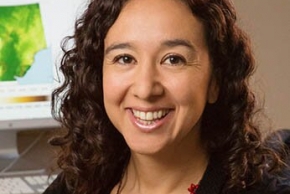Land-Atmosphere Interactions in the Americas: From Local to Continental Scale Hydroclimate
Abstract
The time scales of variability in the subsurface branch of the hydrologic cycle are much longer than those in the atmospheric branch. Leveraging the slowly varying terrestrial processes and their interactions with the fast-changing atmosphere is a promising avenue for improved hydroclimate predictability. In this talk I will provide a synopsis of the research my group and I have done over the past two decades linking local-scale terrestrial processes to continental hydroclimate and the new tools that allow us to bridge these scales. I will focus on three physical processes through which the land affects the atmosphere: 1) latent heat (evapotranspiration), 2) sensible heat and 3) surface roughness. I will use examples of regional hydroclimate processes in North and South America to show that a better understanding and representation of the entire subsurface-surface and atmospheric branches of the hydrologic cycle has great potential for improved hydroclimate predictability.
Land surface evapotranspiration is an important source of moisture for precipitation in regions such as the North American Monsoon, the Great Plains of the United States, the Amazon basin and the La Plata River basin in South America. As such, it is important to correctly represent surface and subsurface hydrologic processes to better predict precipitation and hydroclimate extremes such as drought. Changes in soil moisture can also affect the overlying atmosphere by changing sensible heat fluxes and modifying low-level atmospheric circulation. As an example, dry soil moisture anomalies over South America can modify the path of the South American low-level jet and profoundly impact the location and intensity of precipitation over the region. The implication of this work is that land surface conditions can provide information on the probability of precipitation between two weeks and one month ahead in one of the most productive agricultural regions of the world. Indeed, South America is a region where the land surface is being dramatically transformed for food production. I will discuss how anthropogenic changes in the land surface can impact the hydroclimate of the continent. I will show that changes in surface roughness brought about by Amazonian deforestation can cause decreased precipitation over the deforested region and have a larger impact than changes in moisture recycling.
Biography
As a hydroclimatologist, my work is focused on the interactions between the land and the atmosphere, and more specifically, on changes in hydrology and climate due to human modification of the land surface and greenhouse gas emissions. The two primary lines of research in my group look at land-atmosphere interaction from two perspectives: 1) the effect of climate variability and change, primarily extreme events, on surface hydrology and 2) the effect of changes in surface hydrology on climate.
Education
- Ph.D. Civil and Environmental Engineering, University of Illinois at Urbana-Champaign, 2006
- M.S. Civil and Environmental Engineering, University of Illinois at Urbana-Champaign, 2003
- B.S. Civil Engineering, Universidad de los Andes, Bogotá, Colombia
